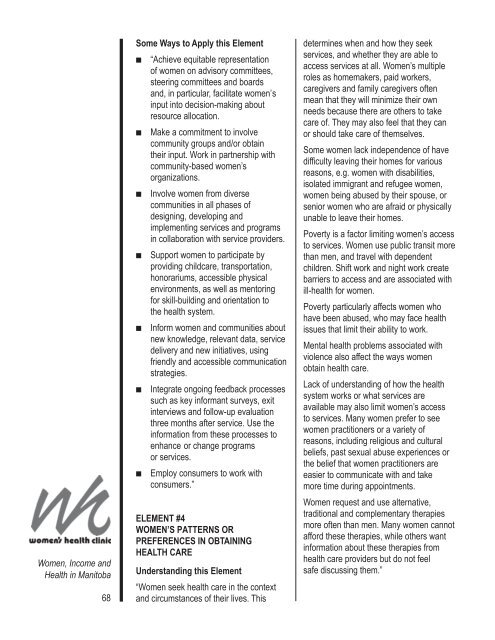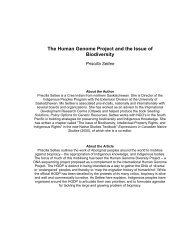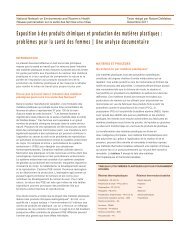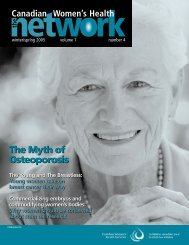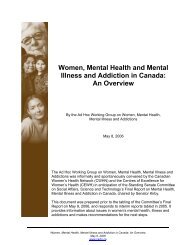here. - Canadian Women's Health Network
here. - Canadian Women's Health Network
here. - Canadian Women's Health Network
- No tags were found...
You also want an ePaper? Increase the reach of your titles
YUMPU automatically turns print PDFs into web optimized ePapers that Google loves.
Women, Income and<strong>Health</strong> in Manitoba68Some Ways to Apply this Element■■■■■■■“Achieve equitable representationof women on advisory committees,steering committees and boardsand, in particular, facilitate women’sinput into decision-making aboutresource allocation.Make a commitment to involvecommunity groups and/or obtaintheir input. Work in partnership withcommunity-based women’sorganizations.Involve women from diversecommunities in all phases ofdesigning, developing andimplementing services and programsin collaboration with service providers.Support women to participate byproviding childcare, transportation,honorariums, accessible physicalenvironments, as well as mentoringfor skill-building and orientation tothe health system.Inform women and communities aboutnew knowledge, relevant data, servicedelivery and new initiatives, usingfriendly and accessible communicationstrategies.Integrate ongoing feedback processessuch as key informant surveys, exitinterviews and follow-up evaluationthree months after service. Use theinformation from these processes toenhance or change programsor services.Employ consumers to work withconsumers.”ELEMENT #4WOMEN’S PATTERNS ORPREFERENCES IN OBTAININGHEALTH CAREUnderstanding this Element“Women seek health care in the contextand circumstances of their lives. Thisdetermines when and how they seekservices, and whether they are able toaccess services at all. Women’s multipleroles as homemakers, paid workers,caregivers and family caregivers oftenmean that they will minimize their ownneeds because t<strong>here</strong> are others to takecare of. They may also feel that they canor should take care of themselves.Some women lack independence of havedifficulty leaving their homes for variousreasons, e.g. women with disabilities,isolated immigrant and refugee women,women being abused by their spouse, orsenior women who are afraid or physicallyunable to leave their homes.Poverty is a factor limiting women’s accessto services. Women use public transit morethan men, and travel with dependentchildren. Shift work and night work createbarriers to access and are associated withill-health for women.Poverty particularly affects women whohave been abused, who may face healthissues that limit their ability to work.Mental health problems associated withviolence also affect the ways womenobtain health care.Lack of understanding of how the healthsystem works or what services areavailable may also limit women’s accessto services. Many women prefer to seewomen practitioners or a variety ofreasons, including religious and culturalbeliefs, past sexual abuse experiences orthe belief that women practitioners areeasier to communicate with and takemore time during appointments.Women request and use alternative,traditional and complementary therapiesmore often than men. Many women cannotafford these therapies, while others wantinformation about these therapies fromhealth care providers but do not feelsafe discussing them.”


